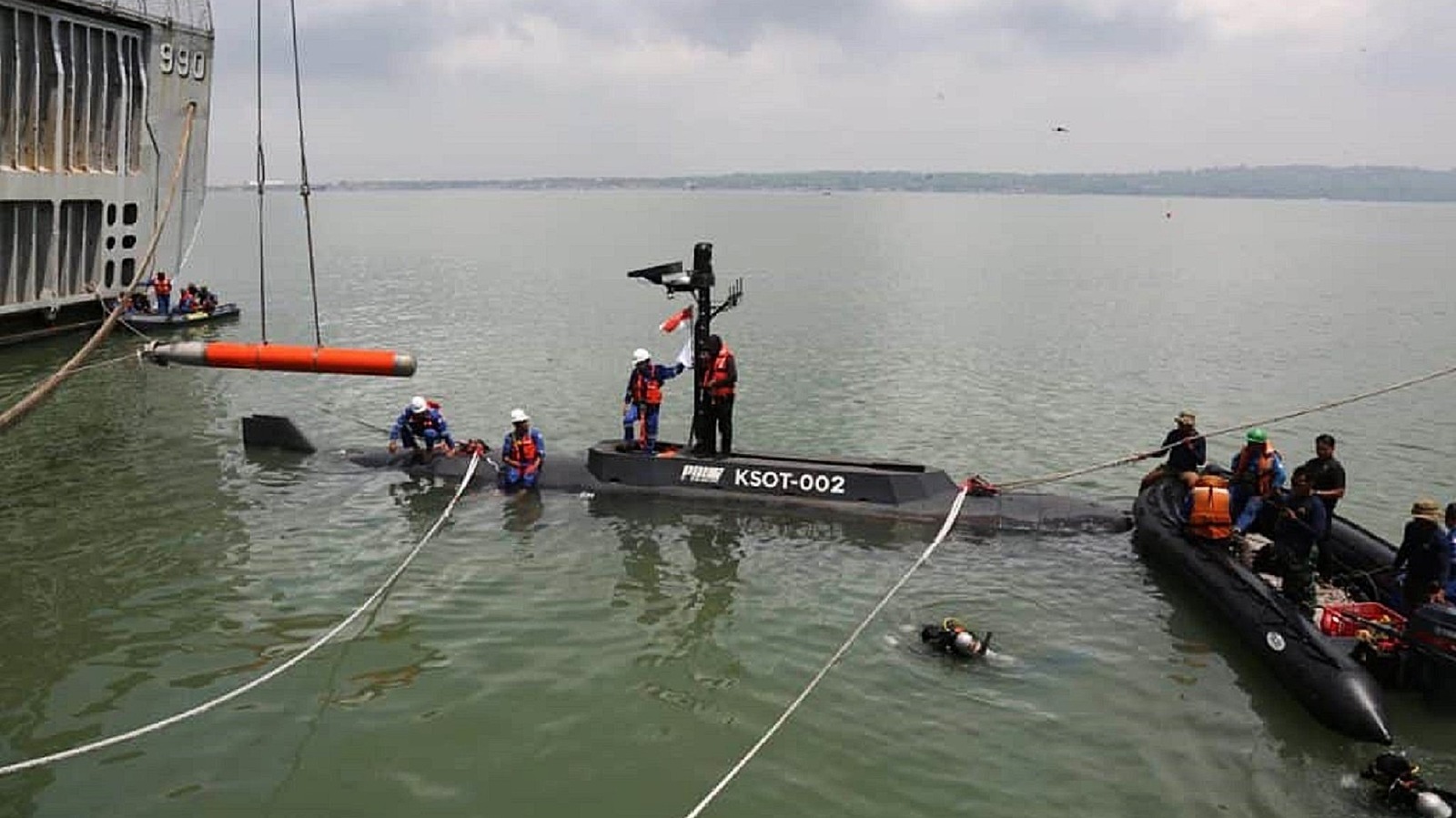It’s an interesting thought that certain aspects of future warfare may not include the loss of human life as autonomous systems battle it out over air and sea. Air drones are fairly common, but wait, sea? That’s right. The Indonesian Navy recently tested an autonomous submarine, called KSOT or Kapal Selam Otomatis Tanpa Awak, by firing a torpedo. The torpedo in question was a 324 mm “Piranha” fired from a launch tube that was mounted externally on the submarine. The torpedo was actually placed using a land-based mobile crane, and after being loaded, the submarine moved further out to sea to test the launch.
The submarine — made by Indonesia-based shipbuilder PT Pal — is equipped with sonar and torpedo launch capabilities, which is standard for military-based submarines, but what’s unique, is that it includes autonomous capabilities, plus it’s fast, efficient, and possibly stealthy. The communications or control systems of the sub can be remotely connected with command centers located on Indonesian Navy warships. While KSOT was originally unveiled in August, this test is significant because it confirms the technology could be used in battle, as it’s able to fire torpedoes. Although, the fact that the Indonesian Navy had to manually load the torpedo is also relevant. Furthermore, the submarine remained only partially submerged during the entire test, and never disappeared fully under the surface. Still, the idea is to have an autonomous vessel and that alone could change naval warfare beyond anything we’ve ever seen.
Ukraine also unveiled a similar naval drone called ‘Sea Baby,’ expanding on its success using naval drones against Russia in the Black Sea. That also helps to highlight the capabilities of the technology and what it can achieve on a grand scale. Future wars may be fought with mostly robots and drones.
How would an autonomous sub change naval warfare?
There are more vessels like KSOT, including Boeing’s XLUUV or “Orca” and Northrop Grumman’s Manta Ray, which can operate without a crew for “long-duration undersea missions.” While there’s no denying the potential of these unmanned submarines for scientific and research purposes — it’s easy to imagine them going places no manned vessel ever could — the military implications are also great.
Manned submarines are built to human living conditions, with oxygen supplies and reinforced hulls to fend off extreme undersea pressure. Once you remove humans from the equation, some of those limitations are gone. For example, a fully autonomous submarine wouldn’t need an oxygen supply system built-in. They can be significantly smaller and more stealthy. The smaller the radius of the hull, the more pressure it can withstand — bigger vessels need a thicker hull to contend with deep sea pressure, which is what causes a submarine to implode.
Technically, without the same limitations, built to smaller and tighter configurations, unmanned and autonomous submarines could reach depths or spaces that wouldn’t otherwise be possible. Combine that with advanced military capabilities, like high-tech torpedoes, and they could sink to extreme depths, fire upon enemies from below, and more. Imagine robot submarines firing on one another while everyone observing is back on a command ship or dry land? It’s wild to think about.
Consider also, Russian’s deep-diving titanium nuclear submarines. The country’s engineers build with titanium — which is extremely expensive and resource-intensive — to reach great depths and because it’s more durable. It also offers some stealth benefits. But without a crew, some of those traits can be achieved with more economical builds. And with advanced nuclear powered submarines entering the waters, those autonomous subs could have all the power they’d ever need.










